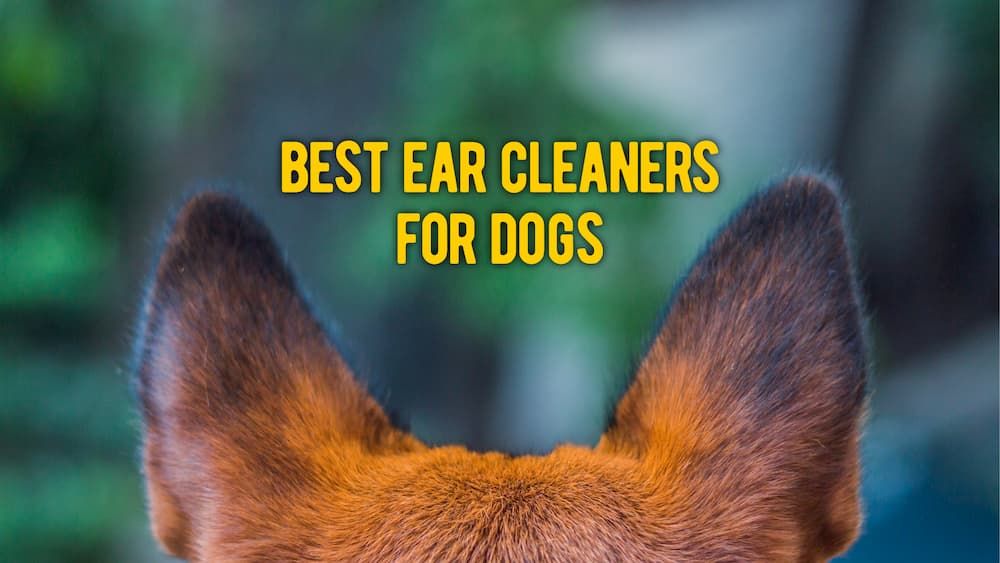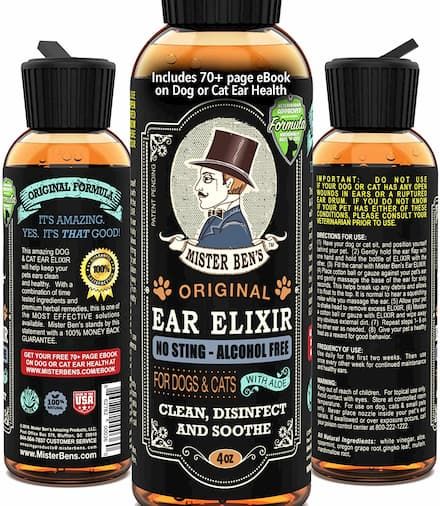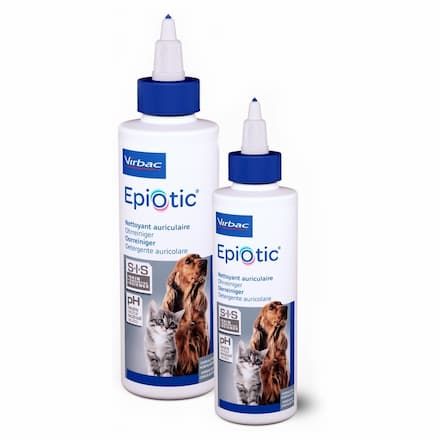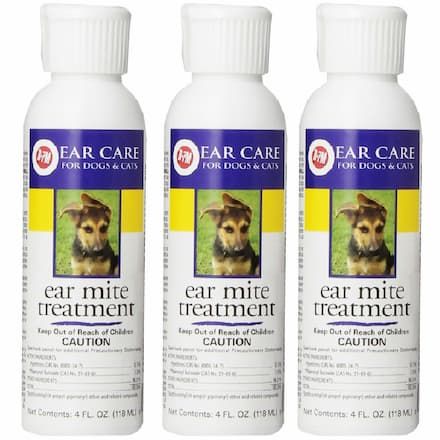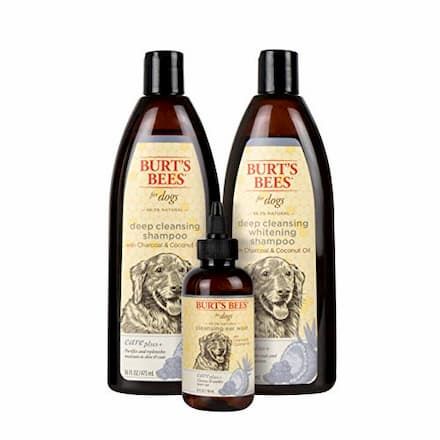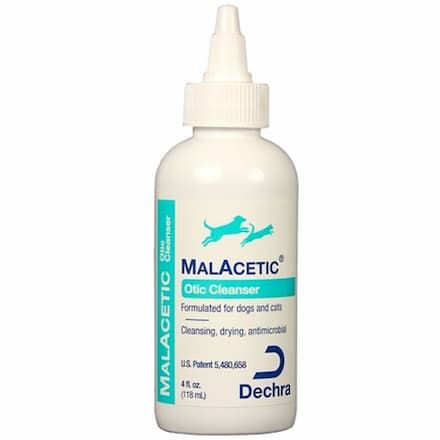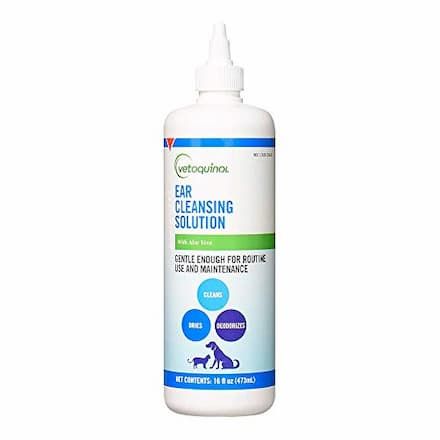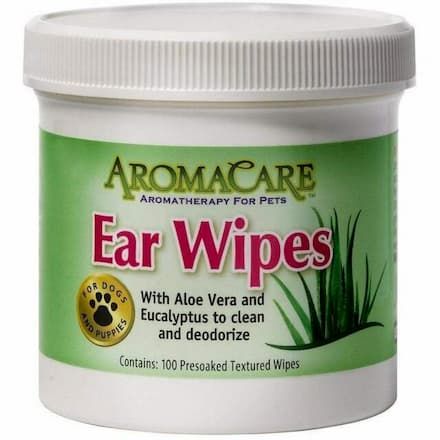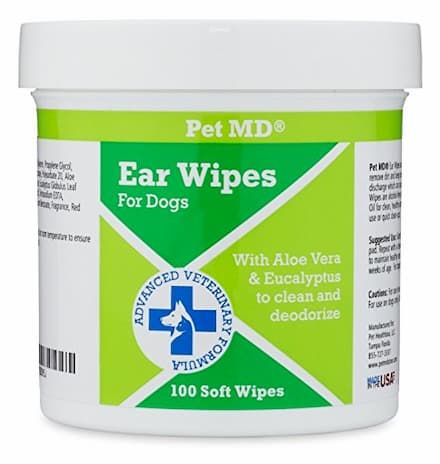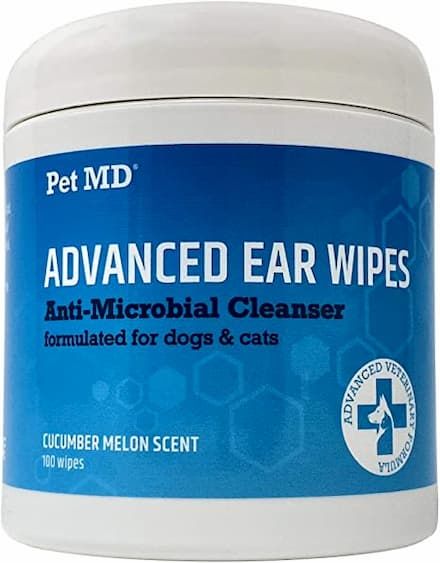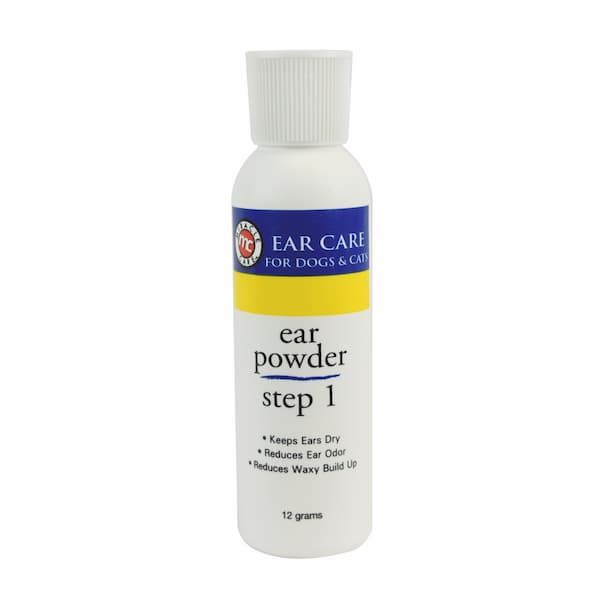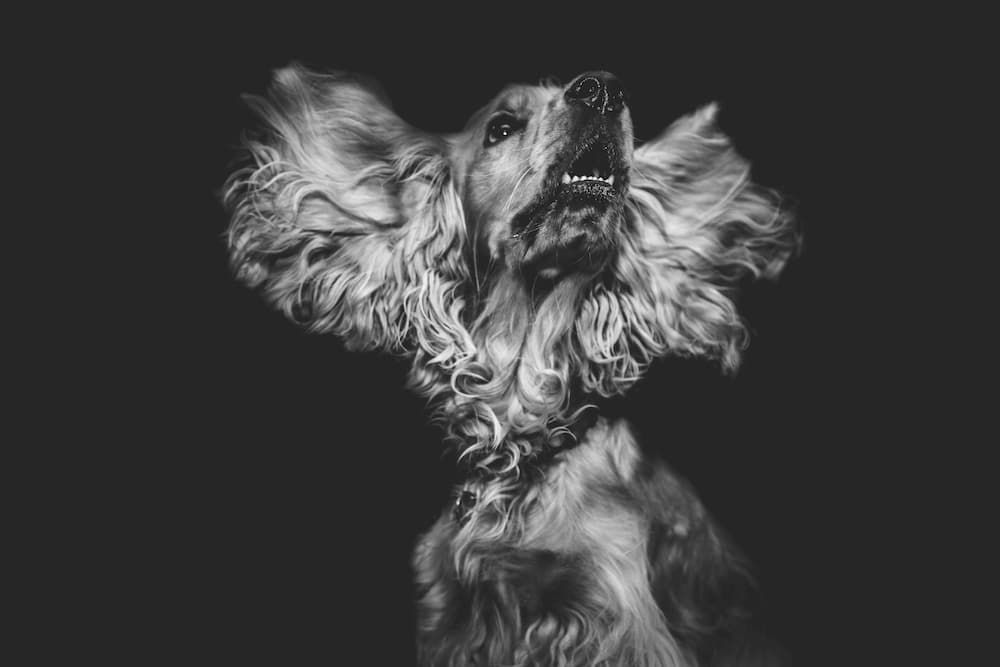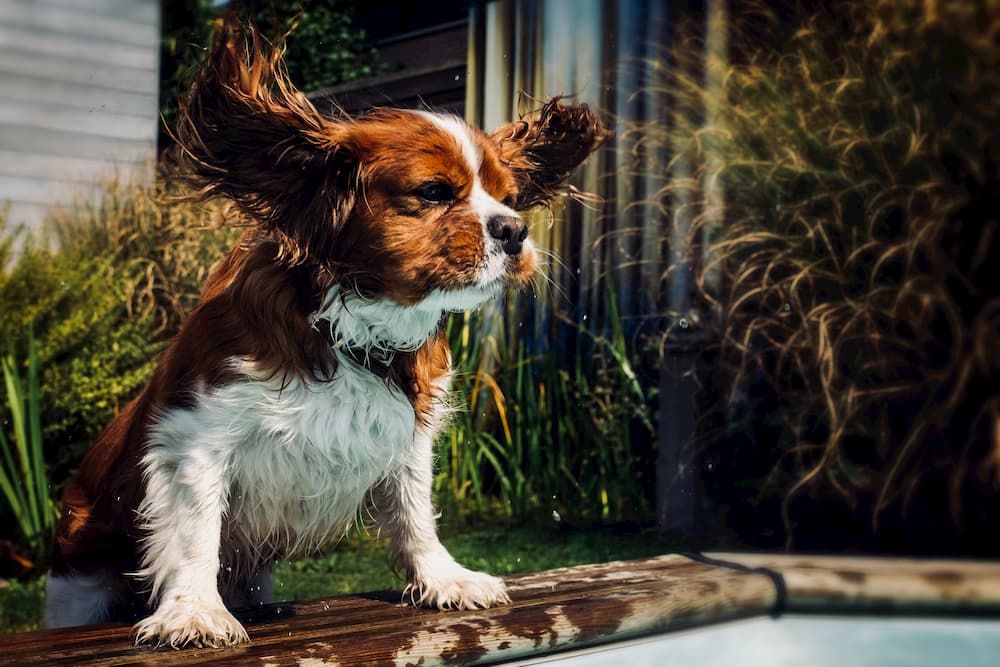The 15 Best Dog Ear Cleaners (Vet Approved Review)
Written by:
Author: Vicki Smirnova
Vicki Smirnova is a professional writer and editor who adores animals and helps readers get along well with their pets. She has been working in digital media for more than 5 years and has great experience writing content about lifestyle, including pets. Vicki specializes in dog health and nutrition, cat feeding, dog training. She is an aquarium lover and is passionate to write about fish care at home. Also, Vicki headed several websites and worked as a news editor.
View all 244 articlesLearn about our editorial process and veterinary review board.
Reviewed by:
Veterinary review
by Dr. Michele King
Michele has been worked for 20 years as a small animal veterinarian. Michele provides advice for an online community in the veterinary industry on a variety of topics.
View all 0 articlesLearn about our veterinary review board
Viewed: 500
Updated on: 02/22/2023
Dogs have a complex ear canal structure and, as a result, can develop problems and diseases.
Dogs with long-hanging ears (breeds like Bassets, Beagles, and Spaniels) are susceptible to certain conditions more often than other dogs. Still, dogs with short and straight ears are often diagnosed with various hearing organ canal inflammatory processes.
To reduce the risk of pathology, it is necessary to regularly take care of the pet’s ears using cleaners to keep the hearing organ canal healthy. Hygiene procedures, such as cleaning, are of great importance.
Proper care can prevent the occurrence of diseases at any age. Other products, such as cleaning wipes, antimicrobial sprays, ointments, and lotions, can effectively care for the hearing organ. Ear drops for dogs are used not only to treat diseases but also to prevent infection and mites, which are very dangerous for the pet. Treatment of these infections is becoming problematic because of the increasing number of multi-resistant bacterial strains.[1]
The Best Ear Cleaners for Dogs (Review)
Cleaning should be carried out sensibly so as not to harm the pet. It is also necessary to carefully select cleaning products, so they do not cause irritation or allergies in the dog. Some cleaners may be sold non-prescription. We have reviewed some brands and selected some of the most suitable products.
1. Zymox Ear Cleanser With Bio-Active Enzyme
This most popular product is available in three sizes and contains 1% hydrocortisone to effectively treat acute and chronic external otitis. This liquid is suitable for cleaning ears and has antibacterial, antifungal, and antiviral properties that help keep your pet’s hearing organs in perfect condition.
Key features:
- An effective and non-toxic cleaner.
- Regular use helps to improve the health of the hearing organs.
- Helps reduce itching and inflammation.
Pros
Cons
- No aggressive chemicals.
- Ease of use.
- Requires just one daily treatment.
- Relatively expensive.
2. Beaphar Ear Drops for Cats and Dogs
These drops for cleaning hearing organs are specially designed to treat various conditions, including mites, wax accumulation, and many more.
Key features:
- The product contains natural pyre thrum.
- Helps soothe irritation and promotes healing.
- Formula helps soothe irritation and promote healing.
Pros
Cons
- Easy to use.
- Easy-to-use drop dispenser.
- An effective and non-toxic.
- Some owners report that this product is less effective.
3. MISTER BEN’S Original Ear Tonic with Aloe for Dogs
This tonic contains five ingredients that eliminate the main pathogens of ear infections. This is a great choice to stop itching and scratching in the dog’s ears, and it will immediately relieve infections, inflammation, swelling, redness, and irritation in the dog’s hearing organs.
Key features:
- It contains five active ingredients to treat and protect the hearing organs.
- The pipette will help you control the amount of tonic.
- Strong enough to treat various problems.
Pros
Cons
- Aloe helps soothe irritation.
- No aggressive chemicals.
- Not expensive.
- Formula includes alcohol that may not be suitable for dogs with sensitive ears.
4. Virbac Epi-Otic Advanced Ear Cleaner
Virbac Epi-Otic is a non-alcohol-containing cleaner that does not contain antibiotics. A low pH formula designed to prevent the growth of bacteria and fungi. This contains salicylic acid to protect the dog’s ears from infections. The product also dries your pet’s canals, protecting it from pathogenic fungi and bacteria.
Key features:
- Recommended for pets with chronic otitis externa.
- The solution is not irritating prevents microbial action.
- The product can be used for normal cleaning of sensitive hearing organs.
Pros
Cons
- The solution reduces irritation.
- Prevents the harmful effects of microbes.
- The liquid removes dirt and dries the hearing organ canal.
- It cannot be used to treat ear infections.
5. Miracle Care R-7M Ear Mite Treatment
This hearing organ cleaner effectively neutralizes ticks due to the presence of pyrethrin. It can be used to treat the ears of dogs older than 12 weeks, eliminating itching and inflammation caused by pests.
Key features:
- Liquid neutralize spinose hearing organ ticks and mites.
- Help get rid of the pesky parasites.
- This liquid is available in two different sizes.
Pros
Cons
- Made in the USA.
- 4-ounce size.
- Suitable for all dog breeds.
- Not suitable for puppies.
6. Burt’s Bees Care Plus+ Charcoal & Coconut Oil Dog Ear Rinse
Clean your favorite pet’s hearing organs with Burt’s Bees Care Plus. The formula of this product copes even with heavy dirt, and the lotion gently cleanses the ear canal, removing excess moisture and dirt.
Key features:
- It consists of completely natural ingredients.
- It does not contain sulfates or dyes.
- Helps prevent infection.
Pros
Cons
- The extract of charcoal to neutralize acidity.
- The solution reduces irritation.
- Made from 99.7% natural ingredients.
- The drug is not intended for the treatment of infection.
- It contains alcohol.
7. MalAcetic Otic Cleanser
This product is designed to maintain the healthy skin of animals with bacterial and/or fungal skin diseases. Thanks to a patented formula based on acetic and boric acids, this tonic helps balance the skin surface’s pH, which makes it unfavorable for excessive growth of fungi/yeast.
Key features:
- It helps to balance the pH of the skin surface.
- Antimicrobial — for mild to moderate bacterial/fungal infections.
- Helps balance skin surface pH.
Pros
Cons
- Protects the skin from a fungus.
- Organic medicine.
- It cleans and dries the hearing organ.
- Some dogs don’t like the smell.
8. Vetoquinol Vet Solutions
Vetoquinol Ear Cleaning Solution is a complex formula for dogs that cleans, dries, and deodorizes the hearing organs. This product is gentle enough for everyday use.
Key features:
- This creates an environment that helps maintain hearing organ health.
- Suitable for the prevention of external infections.
Pros
Cons
- Aloe Vera extract makes the skin soft.
- It can be used to prevent infections.
- Gentle enough for routine use.
- Some dogs don’t like the smell.
9. Vet Organics EcoEars
It helps reduce itching, discharge, and odor caused by bacterial, fungal, and yeast ear infections. This product creates an environment in the dog’s hearing organ that is unsuitable for the organisms that cause most common diseases. This tool is also quite easy to use.
Key features:
- Cleans the hearing organs of bacteria, fungi, yeast and mites.
- The composition does not contain antibiotics, steroids or negative enzymes.
- Aids in the treatment of acute and chronic odor, itching and discharge.
Pros
Cons
- 100% free of aggressive chemicals.
- Made in the USA.
- Renders to infections.
- Fragrance may be too strong for some dogs.
10. PPP Pet Aroma Care 100 Count Wipes
These wipes help keep your puppy’s ears in perfect condition and can prevent infections. The wipes are suitable for use by both puppies over 12 weeks old and adult dogs. This product can be used regularly.
Key features:
- Suitable for adult dogs and puppies.
- Regular use will help prevent infections.
- Contains soothing aloe vera.
Pros
Cons
- Convenient disposable napkins.
- Contains 100 wipes.
- Made in the USA.
- Not intended to treat infections.
11. PetMD Ear Wipes
These wipes make it easy to clean your dog’s hearing organs from dirt and excess wax. The ingredients contained in the napkins prevent the growth and spread of yeast and mites. PetMD reduces painful itching and scratches in addition to eliminating unpleasant odors.
Key features:
- Suitable for puppies and dogs older than 12 weeks.
- Soothes with aloe vera.
- USDA and FSIS regulated manufacturing facility.
Pros
Cons
- These wipes are safe for daily use.
- Made in the USA.
- Easy to grab.
- Not intended to treat ear infections.
12. Pet MD Advanced Dog & Cat Ear Cleaner Wipes
Advanced pet MD wipes are great for regular cleaning. These wipes are alcohol-free, reduce irritation, and help prevent microbial activity. Wipes gently clean and dry the canal, as well as eliminate odors.
Key features:
- Aroma of cucumber and melon.
- May prevent infections.
- Wipes help reduce head shake, and scratching.
Pros
Cons
- Perfect for quick clean.
- Made in the USA.
- Not intended to treat infections.
13. Miracle Care Ear Care Solutions
Ear powder is often used for quick and painless hair removal. This powder is effortless to use. Miracle Care ear powder for dogs contains zinc oxide, silicon dioxide, methyl salicylate, rosin, and bentonite. These ingredients help to quickly and easily remove excess hair from the ear. The powder also creates a protective layer that will help protect your dog’s hearing organs from fungal and bacterial infections.
Key features:
- Helps prevent infections.
- Helps maintain dryness of the hearing organ canal.
- Helps remove dirt.
Pros
Cons
- Helps remove ear hair painlessly.
- Reduces sulfur emissions.
- Doesn’t replace other care methods.
*Ratings are formed by the author of the article based on their own research and combined with customer reviews.
Importance of Cleaning your Dog’s Ears
Regular cleaning of the ears of dogs and cats is one of the necessary conditions for proper care of your pets, it is one of the hygiene procedures that the owner should conduct regularly and can do it yourself at home. Most often, dogs with hanging ears (Dachshund, Spaniel, Basset hound) and with a narrow canal (Sharpei) need regular care. For hygienic purposes, clean the ears as required (every 1-2 weeks). If the ears’ discharge appears regularly in large quantities, then take the pet to a veterinarian. For therapeutic purposes, clean your ears only as directed by a doctor.
- Accumulation of dirt and wax can lead to the development of infection, which can be pretty challenging to treat in animals. Regular cleaning of the ears will help prevent the disease’s risk or detect it at an early stage.
- It is essential to know that the animal’s canal is not straight but has a bend, so cleaning the ears of dogs and cats has some features.
- To begin with, remove the secretions visible on the ear’s inner surface and in the hearing organ canal’s initial part. To do this, you can use a cotton swab or a cloth. Most of the discharge is hidden from the eyes and located in the ear canal’s depth. Do not try to get these secretions with a cotton swab, as you can damage the skin. Only use swabs to remove the debris outside the ear canal.
- Do not use irritating liquids, such as hydrogen peroxide or rubbing alcohol, to clean the hearing organs. This can harm the dog: cause pain or irritation to the ears’ delicate skin.[4] Water can also add to disease, and should not be used for cleaning hearing organs.
For regular preventive cleaning, choosing the most suitable tool for the animal is necessary. Now on, the market represents a considerable amount of great products.
Types of Ear Cleaners: Pros&Cons
The animal products store has many veterinary drops for cleaning and treating ears.
In general, there are two groups medications:
- Medicinal — have antifungal, anti-inflammatory, antimicrobial, and antiparasitic properties. They help you quickly get rid of ear mites or superficial external infections.
- Preventative.
The most popular cleaning agent is veterinary drops. They are available in glass or plastic containers with a small volume dispenser. The right ones must be hermetically packed and designed to treat and prevent diseases.
Ear washes for dogs are used for hygienic procedures. Using it as a treatment is impossible since it does not contain active antifungal substances. It has no harmful additives in the composition and is, therefore, safe to prevent the disease. The best wash has a pleasant smell and refreshes the hearing organ for a long time.[2]
READ MORE: How to Tell if My Dog Has Fleas?
Ear drops, lotions, and sprays have in their composition such active components as:
- antibiotics;
- natural extracts of medicinal herbs;
- essential oils;
Wipes for the daily care of dogs ‘ ears often have anti-inflammatory, wound healing, and antimicrobial effects and well-soften and moisturize the skin. Aloe extract, which is often added to napkins’ composition, has not only all the above properties but also leaves a pleasant refreshing smell. Wipes gently clean the skin without leaving a waxy layer and sticky film on it. Painless for the skin.
Ear-cleaning powders are designed to neutralize the unpleasant smell of sulfur. This tool can keep the ear canal dry and clean. The Powder-an helpful tool for cleaning the ears eliminates mites, and helps remove hair and other foreign objects from the hearing organ. These products have a disinfecting effect. The powder also increases the sensitivity of pathogenic microflora to antibacterial drugs.[3]
Thanks to its rich composition, cleaning, and treatment products can fight not only bacteria, there are the right cleaner for yeast, mites, and fungi, but it also heals wounds, cracks, and ulcers faster. However, only a veterinarian is competent to choose a safe and highly effective medicine and prescribe the exact dosage timing. Before you buy medicine for dogs, be sure to visit a specialist.
DIY Solutions
A normal healthy dog ear has a unique self-cleaning mechanism that is provided by the epithelium. Along with epithelial cells, dust particles, hairs, excess earwax, bacteria, and yeast-like fungi are removed.
In this case, the canal’s epithelium is very thin and delicate and can easily be damaged by improper cleaning, especially with cotton swabs or tweezers wrapped in cotton wool. Therefore, it should be carried out very carefully to not harm the pet. The procedure is not complicated but requires increasing attention and accuracy. [5]
Guide to cleaning:
- Fixing the animal. If the dog is restless and runs away from the owners, it is better to postpone cleaning. It is recommended to clean the hearing organs after washing, sleeping, or eating. The dog should be held comfortably, the ear flap raised. And all the time, praise your pet. The process should evoke pleasant associations in the animal.
- After an examination of the outer ear, you need to take cotton pads or sanitary napkins and clean the entire surface.
- Gently massage. Massaging movements help to soften any debris, and remove it. Even such actions give pet pleasure, and it will be calmer.
- The removal of dirt. This is done using a cotton swab. When you see a clean disk or swipe, you can assume that the process is over.
Finish cleaning by wiping the ear dry.
READ MORE: Sick Puppy 101
READ MORE: Lumps and Bumps on Dogs
FAQ
How to Spot an Ear Infection in Dogs
As a rule, these infections are manifested by intensive ear scratching, vigorous shaking of the head, and howling. These clinical signs may indicate an ear infection.
Also, a sign of infection or inflammation is an unpleasant smell from the animal’s ears. In severe cases, infections are complicated by hearing loss. The whining of the animal when touching the ears is also evidenced of possible infection. The progression of untreated disease and the promotion of microbes deeper is accompanied by a sharp increase in pain. There is a tendency of the animal to hold its head motionless with a tilt to one side. Involvement in the pathological process of the inner ear is manifested by dizziness, impaired balance, coordination, walking the animal in a circle, and vomiting. Use the right tools to ear infection treatment.
Any of these signs need to be treated by a veterinarian right away.
How to clean a dog’s ears?
This procedure is suitable for any breed of dog with healthy, uninfected ears. When cleaning, you can use the best cleaning solution. A few drops of this solution are placed into the ear canal, and the ear is lightly massaged so that the solution gets as deep inside as possible. Then the outside of the ear is cleaned with a soft swab wrapped on a stick or tweezers. Also, a soft swab is used to wipe the ear. While cleaning the ears, talk to the dog in a calm, affectionate tone, praise it.
Can you put peroxide in a dog’s ear for an infection?
It is not recommended to use hydrogen peroxide, alcohol liquids, or various oils to clean the ears, this can harm the dog.
Veterinarians do not recommend using hydrogen peroxide to clean the ears of dogs, because animals are very susceptible to any unpleasant sensations and sounds. If the product gets on a small wound or scratch in the animal’s ear, it will start to emit a characteristic hissing sound and cause a burning sensation. Such feelings can lead to the appearance of anxiety and fear in the pet.
How to flush a dog’s ear with cleaner
You must do the following:
- Gently seat the dog.
- Fill the outer ear canal with warm cleaning solution. Use enough cleaner to completely fill the ear canal. It is normal for some solution to spill out of the ear canal.
- Close the ear and massage the base so that the lotion penetrates the ear canal.
- Moisten the cotton pad with any suitable lotion.
- Remove dirt from the outer ear with a cotton swab.
- Repeat the procedure if necessary.
READ MORE: How to take care of dog gums?
Article Sources:
- Mekić, S., et al. “Antimicrobial Susceptibility of Pseudomonas Aeruginosa Isolates from Dogs with Otitis Externa — PubMed.” PubMed, 8 July 2020, pubmed.ncbi.nlm.nih.gov/21742683/.
- Perry, Laura. “Epidemiological Study of Dogs with Otitis Externa in Cape Breton, Nova Scotia.” PubMed Central (PMC), 1 Feb. 2017, ncbi.nlm.nih.gov/pmc/articles/PMC5234316/.
- Smith, Alison. “Usage Patterns of Carbapenem Antimicrobials in Dogs and Cats at a Veterinary Tertiary Care Hospital.” PubMed Central (PMC), 1 Aug. 2019, ncbi.nlm.nih.gov/pmc/articles/PMC6639476/.
- Stevens‐Sparks, Cathryn K., and George M. Strain. Post‐anesthesia Deafness in Dogs and Cats Following Dental and Ear Cleaning Procedures. 17 June 2010, onlinelibrary.wiley.com/doi/10.1111/j.1467-2995.2010.00543.x. onlinelibrary.wiley.com/doi/10.1111/j.1467-2995.2010.00543.x.
- Otitis Externa in Animals — Wikipedia. 29 Mar. 2019, en.wikipedia.org/wiki/Otitis_externa_in_animals.
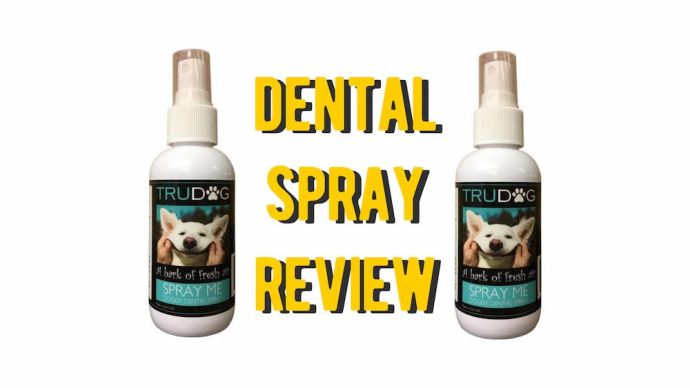 Dog Products & Toys Reviews Trudog Dental Spray Review: Is It Best For Bad Breath and Tartar? (Vet Approve
Dog Products & Toys Reviews Trudog Dental Spray Review: Is It Best For Bad Breath and Tartar? (Vet Approve - 335
- 0
 Dog Products & Toys Reviews Super Chewer Box Review: Is BarkBox Super Chewer The Toughest, Most Durable Dog Toys?
Dog Products & Toys Reviews Super Chewer Box Review: Is BarkBox Super Chewer The Toughest, Most Durable Dog Toys? - 155
- 0
 Dog Products & Toys Reviews The 10 Best Brush for Australian Shepherd: Review and Buying Guide
Dog Products & Toys Reviews The 10 Best Brush for Australian Shepherd: Review and Buying Guide - 13353
- 0
 Dog Products & Toys Reviews The 10 Best Brush for Australian Shepherd: Review and Buying Guide
Dog Products & Toys Reviews The 10 Best Brush for Australian Shepherd: Review and Buying Guide - 13353
- 0









